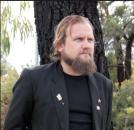'The Forgotten is a film about Aboriginal and Torres Strait Islander servicemen and women who have served, fought and died for their country in all of the wars and peace-keeping missions that the Australian armed forces were involved in the 20th century. Glen Stasiuk was inspired by his family's own history and the respect he felt for the Anzac black diggers. Consequently, The Forgotten contains a personal story about four Nyoongar brothers from the South-West of Western Australia, one of whom is acknowledged as the first Aboriginal Soldier to receive a military medal in the First World War.
'The Forgotten features war veterans and family member's personal experience s and thoughts from both World Wars, as well as veterans who served in Korea, Vietnam, the Persian Gulf and East Timor' (Source: Creative Spirits website)

